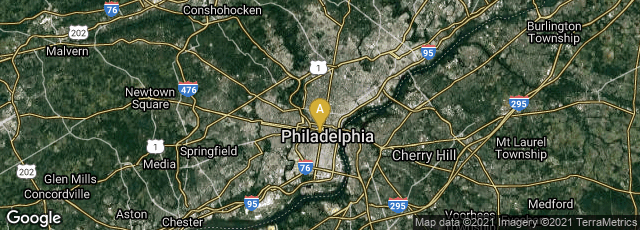

A: Philadelphia, Pennsylvania, United States
The early American printing manuals appear to have been intended for the owners of small to medium printing shops which would not necessarily have required high speed presses. In the first edition of the widely used American printing manual by Thomas F. Adams of Philadelphia entitled Typographia . . . (1837) there is no discussion of "machines" but in the second edition, which was very significantly revised, and given a new title as Typographia, or the Printer's Instructor (1844), the last chapter X "Improved Presses" discusses "machine printing" briefly with examples of machines on pp. 270-72, and this section was expanded in several of the following eleven editions. The 1857 edition discusses Hoe's rotary press and particularly recommends the Adams Power Press, invented by Isaac Adams. as "the best power press for book work." This recommendation by Adams was widely shared; Harpers, for example, had employed Adams Power Presses for book production since the 1830s.
By 1864, the date of the last edition of Adams' Typographia, Adams' book was outdated, and was replaced by Thomas Mackellar's The American Printer, which first appeared in 1866. This I have not seen in the first edition but in the edition of 1871, which is available online, the author makes the statement on p. 212 that "most books, however, are printed on the bed-and-platen power-press invented by Isaac Adams, of Boston,- the only machine-press yet discovered that is capable of producing fine work and exact register. It will give from six to eight thousand impressions per day." MacKellar also provides fine images of some of the latest machine presses. From this we may conclude that by 1870 a high percentage of book printing in America, except for small editions, was being done by machine. However, it should also not be forgotten that many book printers continued to use hand presses, especially of the Stanhope, Columbian, and Albion type, throughout the nineteenth century, and that a few handpress printers of limited editions continue to use similar 19th century presses in the second decade of the 21st century.
"Although there has been a tendency to equate the emergence of the cylinder printing machine with the application of steam-power, the two developments were not necessarily interrelated. Power, other than that supplied by a human being, could be and was applied to ther presses besides those constructed on the cylinder principle, and some cylinder machines were worked by hand. Efficient steam-engineers were not universally available for another thirty years after Koenig's invention. . . . As late as 1851, the Printing Machine Managers Trade Society had a membership of only 130, indicating that in London, the main centre of printing, there could not have been many machines at work" (Moran, Printing Presses. History & Development from the Fifteenth Century to Modern Times [1973] 123).